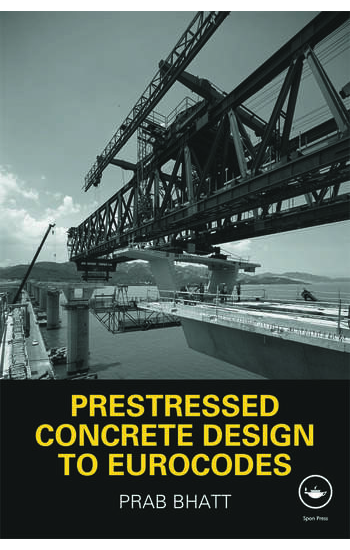
Save: 15%

Save: 15%
Prestressed Concrete Design To Eurocodes
Publisher:
| Author:
| Language:
| Format:
Publisher:
Author:
Language:
Format:
₹2,495 ₹2,120
Save: 15%
In stock
Ships within:
In stock
ISBN:
Page Extent:
Ordinary concrete is strong in compression but weak in tension. Even reinforced concrete, where steel bars are used to take up the tension that the concrete cannot resist, is prone to cracking and corrosion under low loads. Prestressed concrete is highly resistant to stress, and is used as a building material for bridges, tanks, shell roofs, floors, buildings, containment vessels for nuclear power plants and offshore oil platforms. With a wide range of benefits such as crack control, low rates of corrosion, thinner slabs, fewer joints and increased span length; prestressed concrete is a stronger, safer, more economical and more sustainable building material.
The introduction of the Eurocodes has necessitated a new approach to the design of prestressed concrete structures and this book provides a comprehensive practical guide for professionals through each stage of the design process. Each chapter focuses on a specific aspect of design
Fully consistent with Eurocode 2, and the associated parts of Eurocodes 1 and 8
Examples of challenges often encountered in professional practice worked through in full
Detailed coverage of post-tensioned structures
Extensive coverage of design of flat slabs using the finite element method
Examples of pre-tensioned and post-tensioned bridge design
An introduction to earthquake resistant design using EC 8
Ordinary concrete is strong in compression but weak in tension. Even reinforced concrete, where steel bars are used to take up the tension that the concrete cannot resist, is prone to cracking and corrosion under low loads. Prestressed concrete is highly resistant to stress, and is used as a building material for bridges, tanks, shell roofs, floors, buildings, containment vessels for nuclear power plants and offshore oil platforms. With a wide range of benefits such as crack control, low rates of corrosion, thinner slabs, fewer joints and increased span length; prestressed concrete is a stronger, safer, more economical and more sustainable building material.
The introduction of the Eurocodes has necessitated a new approach to the design of prestressed concrete structures and this book provides a comprehensive practical guide for professionals through each stage of the design process. Each chapter focuses on a specific aspect of design
Fully consistent with Eurocode 2, and the associated parts of Eurocodes 1 and 8
Examples of challenges often encountered in professional practice worked through in full
Detailed coverage of post-tensioned structures
Extensive coverage of design of flat slabs using the finite element method
Examples of pre-tensioned and post-tensioned bridge design
An introduction to earthquake resistant design using EC 8
About Author
Reviews
There are no reviews yet.
Related products
RELATED PRODUCTS
Computer Methods For Engineering With Matlab Applications, 2nd Edn
Save: 15%
Digital Forensics In The Era Of Artificial Intelligence
Save: 15%
Driving 5g Mobile Communications With Artificial Intelligence Towards 6g
Save: 15%
Geospatial Data Science Techniques And Applications
Save: 15%
Iot And Ai Technologies For Sustainable Living A Practical Handbook
Save: 15%
Machine Learning For Healthcare , Handling And Managing Data
Save: 15%
Secure Data Science Integrating Cyber Security And Data Science
Save: 15%
Security And Organization Within Iot And Smart Cities
Save: 15%
Sensors Cloud And Fog , The Enabling Technologies For The Internet Of Things
Save: 15%



Reviews
There are no reviews yet.